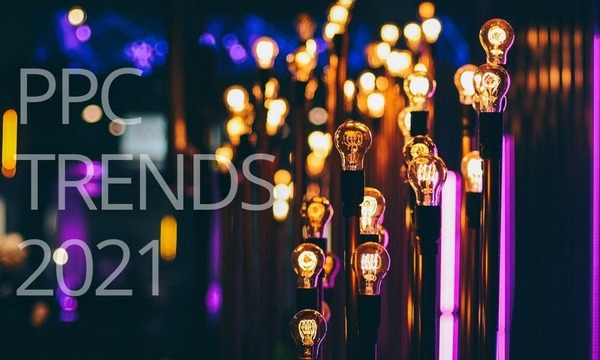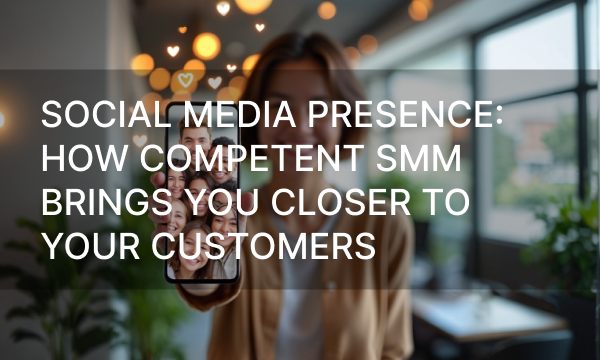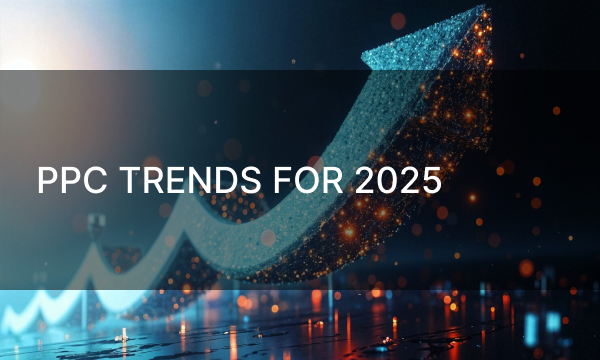While many marketing tools can be used for conversions, data gathering, brand awareness, and other campaign goals, some are more effective than others. That is because certain advertising techniques are specifically designed to achieve particular goals more efficiently. For a marketing campaign to be truly effective, every advertisement, regardless of the type, should lead to a clear, simple and convincing instrument that reassures your potential customers that they’re making the right choice, ultimately, securing more sales. Let’s talk about landing pages.
What’s a Landing Page?
When a potential customer engages with your advertisement, whether by clicking a link in a sales notification email or watching a video ad on YouTube, they are usually directed either to your website, store page, or a standalone page dedicated entirely to the product featured in the ad. That self-sufficient web page, designed with clarity and conciseness, often includes a form to collect visitor contact information or facilitate an immediate purchase. This is known as a landing page.
While landing pages vary in design depending on a business’s specific end goals, they generally fall into two main categories:
Clickthrough Landing Pages are designed to drive immediate sales or subscriptions. They typically feature a central call-to-action button that directs visitors to a checkout page or completes a transaction. Since visitors reaching this page have already shown strong interest, the design is kept minimal, focusing only on essential information.
Clickthrough landing pages are often used for free trial sign-ups, or subscription-based services, guiding potential customers toward a final purchase decision.
Lead Generation (Lead gen) Landing Pages traditionally include an information fill-out form that collects details such as a visitor’s name, email, or phone number, helping businesses build a database of potential customers for future marketing efforts. To encourage form completion, lead gen landing pages often offer an incentive in return, for example, an introductory webinar to a bigger course, an ebook, an exclusive discount, or free shipping deal.
Marketers and businesses use landing pages in order to achieve key objectives, such as:
- Gathering information on potential customers that have shown interest in your brand;
- Increasing conversions alongside broader marketing campaigns;
- Raising brand awareness through promotional offers or free incentives;
- Showcasing new products to create a compelling sales pitch.
The Structure of a Landing Page
While no two landing pages look exactly the same, there are some core elements that every effective landing page should include:
- A standout selling proposition;
- An image, video, or animation;
- A description or a list of product benefits;
- social proof or customer feedback;
- A clear call to action.
Your standout selling proposition is the centerpiece of your landing page. It provides a concise marketing answer to a key consumer question, “Why should I choose your product?” Your proposition should be clear, compelling, and easy to understand, highlighting what makes your offer unique and how it solves the visitor’s problem. It should be woven throughout your page – within your headline, supporting description, and a closing statement – creating a consistent message. Keep it simple and direct, ensuring visitors immediately understand why they are here and how to proceed, whether that means leaving their contact information, moving to checkout, subscribing, or taking another desired action.
An image, video, or animation plays a crucial role in forming first impressions before visitors even read any text. A strong visual element reinforces your message by showcasing your product in action. This could be an image of a delicious meal made from the ingredients you sell, a person running in your brand’s sportswear, or a screenshot of your app in use on a modern device.
To effectively support your headlines and the selling proposition, your landing page should include a description of product features and benefits. Remember: features define what the advertised product is and benefits explain why it’s valuable to the customer. Where possible, connect the two, showing how each feature enhances the customer experience.
“Never slip in the rain again with our permeable membrane running shoes”.
Featured feedback or social proof reassures potential customers that other people have tried and benefited from your product or service. This is a key influence in decision-making, acting as a trusted recommendation, even from someone the visitor has never met. Testimonials can take the form of direct quotes, customer reviews, brand logos, case studies or video interviews.
Whatever form of social proof you choose, never fake it. Misleading testimonials can seriously damage your brand’s credibility and affect customer loyalty.
Finally, your call to action is the reason the visitor is on your landing page. This is the pivotal moment where they decide to take the next step, whether that’s filling out a form or clicking a button.
Keep your forms simple and concise and avoid overly aggressive or demanding CTA text. Instead, make it inviting and natural. A conversational and approachable CTA makes your offer feel supportive rather than like a desperate attempt to make a sale.
Every element of your landing page plays a role in guiding the visitor towards taking action. Each part is equally influential and should not be overlooked. A well-structured landing page is the key to increasing conversions and achieving your marketing goals.
What Makes a Landing Page Effective?
Landing pages offer several advantages that make them a powerful marketing tool that can enhance your advertising impact and increase the overall efficiency of your campaigns. Below are some key benefits:
- Increased conversion rates through reaching a wider audience of potential customers;
- Affiliate traffic generated through social proof;
- Design flexibility, independent of your main website;
- High effort-to-result ratio;
- Targeted messaging with a single marketing goal;
- Easier testing and implementation of changes;
- Segmented promo offers tailored to different audiences.
But what makes a landing page more effective than, say, a homepage when it comes to driving conversions? After all, both provide information about your products and both offer ways for your visitors to make a purchase. The difference lies in their purpose and structure.
First, homepages serve as a broad introduction to your brand, offering details about your products, current sales, store locations, customer support, and more. They contain multiple links directing visitors to different sections, but only a few lead directly to a purchase. A landing page, on the other hand, has just one focus – a single call to action that encourages visitors to either make a purchase or provide contact information. By minimizing distractions, landing pages keep potential customers engaged with the product or service they’re interested in, reducing the chances of losing them before conversion.
Second, homepage traffic is often organic, coming from unpaid sources or as a byproduct of your marketing efforts. Visitors typically explore the homepage to learn more about the brand, its values, and its offerings. Landing pages, however, are specifically designed for paid advertising, meaning every visitor has been directed there with a clear intent. Since paid ads need to deliver measurable results, landing pages are structured entirely around guiding the visitor towards the desired action.
In short, homepages are designed for discovery, helping visitors familiarize themselves with your brand, while landing pages are built for conversion, keeping the focus on a single, actionable goal.
A Call to Action
As mentioned earlier, every landing page requires a call to action (CTA) — the final element that guides potential customers towards the desired action Typically, this takes the form of a short, direct phrase placed on a button for form submission or a checkout link. The message should be clear and specific, ensuring visitors know exactly what to do and what to expect as a result. Examples include:
- «Start Your Free Trial»
- «Get a Demo»
- «Receive a 20% Off coupon»
- «Buy Now»
- Sign Up for the Course»
When crafting your call to action, avoid pressure tactics, overly persuasive language, or generic wording like “submit” or “done”.
REMEMBER: Your call to action is more than just a button – it’s a message with meaning.
To craft a strong CTA, consider what your landing page is promoting and what action you want visitors to take. Your end goal should align with your overall marketing campaign, your business plans, and industry. Some common conversion goals are:
- Increasing sales;
- Gaining subscriptions;
- Attracting leads;
- Building a customer database.
Once you’ve defined your conversion goal, evaluate your CTA by asking questions like:
- Does your message clearly reflect your conversion goal?
- Is it easy to understand?
- Does your message align with your selling proposition?
- Is it clear what your customer will receive by engaging with your message?
- Does it offer something valuable in exchange for user data?
Landing pages provide an ideal environment for A/B testing, and this applies strongly to the call to action segment. Experiment with different messages, button designs, color, placements, and form structures to determine what drives the highest engagement. Whatever variations you test, ensure your call to action remains clear, noticeable, and compelling, effectively guiding visitors toward the action you want them to take.
Best Practices
Here are a few best practices to help you make the most out of your landing page:
Use a template if needed. If you’re just starting out, creating a well-structured landing page from scratch can be challenging. A general template provides a solid foundation – simply customize it with your brand’s unique offerings to make it feel personal and engaging.
Remove navigation. Unlike a Website, a landing page is a self-contained piece of content. navigation bars or links to other pages can distract visitors, lowering your chances of conversion. Keep the focus on your main goal.
Show your offer in action. The visual elements of your landing page should demonstrate how your product is used, helping customers visualize themselves benefiting from it in real life.
Keep language clear and concise. Use short, direct headlines and descriptions that immediately communicate your offer. Bullet points can help make information easier to digest at a glance.
Avoid clutter and long load times. An overcrowded landing page – both visually and technically – can slow down loading speeds, which increases the likelihood of visitors leaving before they engage with your content.
In Conclusion
Landing pages are a powerful marketing tool, designed with a single goal in mind: driving conversions. While their structure remains fairly consistent – with key elements essential for effectiveness – there is always room for experimentation and optimization to make your landing page stand out.
Unlike websites or homepages, landing pages are focused on one goal at a time to maximize results. The two main types, clickthrough and lead gen, either drive sales directly or collect customer information for future marketing efforts. By Using landing pages alongside your advertising campaigns, you reassure potential customers of their decision while creating a seamless path to conversion, ultimately helping you secure more sales.



